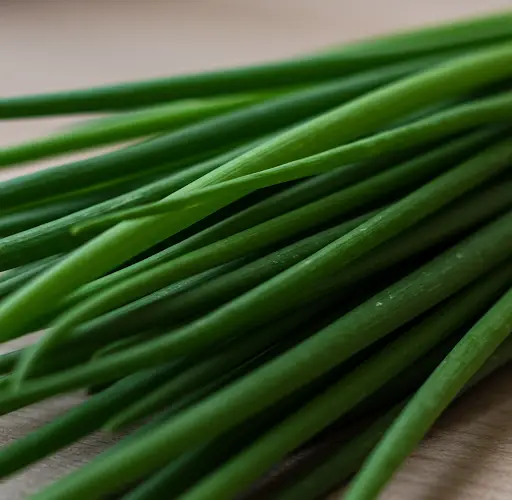Chives are a versatile, easy-to-grow herb that can be used to enhance the flavor of countless dishes, from soups and salads to omelets and stir-fries. If you’re short on space or simply want to try a low-cost, eco-friendly gardening method, growing chives in plastic bottles is the perfect solution. This method not only recycles waste but also provides you with a steady supply of fresh herbs right from your windowsill or balcony.
This guide walks you through everything you need to know to grow chives in plastic bottles—from preparing the containers to harvesting your flavorful greens.
Why Grow Chives?
Chives are part of the allium family, related to onions, garlic, and leeks, and they offer a mild onion-like flavor. Aside from their culinary value, chives are rich in vitamins A and C and have antibacterial properties. They’re also pest-resistant and grow well indoors or outdoors, making them an ideal herb for beginner gardeners.
Best of all, chives are perennials. With the right care, you can plant once and enjoy harvests for years to come.
Materials You’ll Need
Here’s what you need to get started:
-
One or more plastic bottles (1.5 or 2-liter soda bottles work well)
-
Chive seeds or small chive seedlings
-
Potting mix (preferably well-draining soil suitable for herbs)
-
Sharp scissors or craft knife
-
Nail or screwdriver (for drainage holes)
-
Water spray bottle or watering can
-
Sunny location such as a balcony, window, or patio
Step-by-Step Instructions
1. Prepare the Plastic Bottles
First, clean the bottles thoroughly to remove any residue. Then, use a sharp knife or scissors to cut off the top portion. You can either remove the top completely or make a flap-style opening that can be folded back.
Poke 4–6 holes in the bottom of the bottle using a nail or screwdriver. This ensures good drainage and prevents water from pooling at the base, which could rot the roots.
2. Add Soil
Fill the bottle about three-quarters full with a good-quality potting mix. Chives prefer rich, well-drained soil. You can mix a bit of compost or organic matter to enrich the soil.
Leave about an inch of space at the top to avoid overflow when watering.
3. Sow Seeds or Transplant Seedlings
If you’re using seeds, sprinkle them evenly over the soil surface and lightly cover with a thin layer of soil (about 1/4 inch deep). Mist the top gently with water using a spray bottle.
If you’re using seedlings, make a small hole in the center of the soil and place the seedling in, then gently firm the soil around the roots.
Ideal Growing Conditions
Light
Chives need at least 5–6 hours of direct sunlight daily. Place your plastic bottle planters on a sunny windowsill, balcony, or in a bright kitchen space. If growing indoors without sufficient sunlight, you can supplement with a small grow light.
Watering
Chives like slightly moist soil but not soggy conditions. Water them lightly but consistently, allowing the top inch of soil to dry slightly between waterings. Avoid overwatering, especially since plastic bottles retain moisture longer than clay pots.
Fertilizing
You can feed your chives every 4–6 weeks with a diluted liquid fertilizer, especially if you’re harvesting frequently. Over-fertilizing may reduce their flavor, so use a balanced organic fertilizer sparingly.
Maintenance and Harvesting
Chives require minimal care once established. As the plants grow, you can start harvesting when they’re about 6 inches tall. Use scissors to snip off the leaves, starting from the outer edges and cutting close to the base. Avoid harvesting more than one-third of the plant at a time to allow continuous growth.
Frequent trimming actually encourages bushier growth, so don’t hesitate to use your chives often!
If your chive plants produce flowers, you can snip them off to encourage more leaf growth, or leave them if you’d like to enjoy their attractive purple blooms.
Recycling Tip: Vertical Herb Tower
If you want to grow multiple herbs or increase your harvest, consider stacking your plastic bottles to create a vertical herb garden. Simply cut out side panels and insert small plants or seedlings in each section, allowing for efficient use of space—perfect for urban settings.
Benefits of Plastic Bottle Gardening
-
Eco-friendly: Reuse plastic waste that would otherwise be discarded.
-
Space-saving: Ideal for small balconies, windowsills, or tight spaces.
-
Portable: Easily move your mini garden to catch sunlight or shelter from heavy rain.
-
Beginner-friendly: Easy to monitor and manage, especially for those new to gardening.
Final Thoughts
Growing chives in plastic bottles is a fun, sustainable way to enjoy fresh herbs at home all year round. With minimal materials and effort, you can have a thriving mini herb garden, even in a small apartment. Whether you’re an experienced gardener or just getting started, this method offers convenience, sustainability, and a touch of green to your living space.
Give it a try, and soon you’ll be snipping fresh chives straight into your favorite dishes!



